-
 Bitcoin
Bitcoin $105,072.9173
-0.46% -
 Ethereum
Ethereum $2,624.9916
-0.45% -
 Tether USDt
Tether USDt $1.0005
0.00% -
 XRP
XRP $2.2087
-1.64% -
 BNB
BNB $667.4636
-0.26% -
 Solana
Solana $153.4648
-2.05% -
 USDC
USDC $0.9999
0.01% -
 Dogecoin
Dogecoin $0.1901
-2.99% -
 TRON
TRON $0.2735
1.88% -
 Cardano
Cardano $0.6782
-2.48% -
 Hyperliquid
Hyperliquid $35.4649
-2.31% -
 Sui
Sui $3.1889
-2.26% -
 Chainlink
Chainlink $13.8726
-3.51% -
 Avalanche
Avalanche $20.2543
-5.33% -
 Stellar
Stellar $0.2672
-2.62% -
 UNUS SED LEO
UNUS SED LEO $8.8766
-0.62% -
 Bitcoin Cash
Bitcoin Cash $403.7804
-0.30% -
 Toncoin
Toncoin $3.1985
-0.02% -
 Shiba Inu
Shiba Inu $0.0...01285
-2.08% -
 Hedera
Hedera $0.1683
-2.57% -
 Litecoin
Litecoin $88.2152
-2.65% -
 Polkadot
Polkadot $4.0484
-3.72% -
 Monero
Monero $317.1060
-8.36% -
 Ethena USDe
Ethena USDe $1.0013
-0.01% -
 Bitget Token
Bitget Token $4.7414
-1.70% -
 Dai
Dai $0.9998
-0.03% -
 Pepe
Pepe $0.0...01196
-3.84% -
 Pi
Pi $0.6489
-0.33% -
 Aave
Aave $265.7810
0.15% -
 Uniswap
Uniswap $6.3507
-5.73%
How to use DMI when breaking through the downward trend line? Is the trend reversal DMI signal accurate?
When Bitcoin breaks a downward trend line, a bullish DMI crossover and rising ADX above 25 can confirm a trend reversal, guiding traders to enter long positions.
Jun 01, 2025 at 10:49 pm
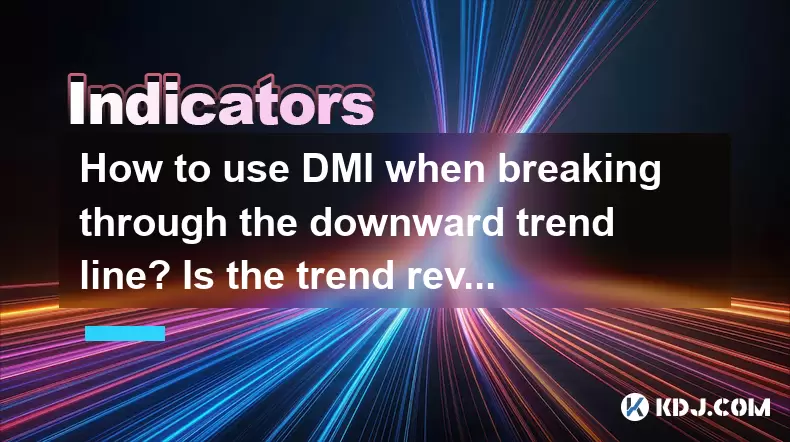
The Directional Movement Index (DMI) is a powerful technical analysis tool used by traders to identify the direction of a market trend and its strength. When used in conjunction with trend lines, it can help traders make informed decisions about potential trend reversals. In this article, we will explore how to use the DMI effectively when breaking through a downward trend line and evaluate the accuracy of the DMI signal for trend reversals.
Understanding the DMI
The DMI is composed of three main lines: the Positive Directional Indicator (+DI), the Negative Directional Indicator (-DI), and the Average Directional Index (ADX). The +DI measures upward price movement, the -DI measures downward price movement, and the ADX indicates the strength of the trend, regardless of its direction.
To use the DMI effectively, traders typically look for crossovers between the +DI and -DI lines. A bullish signal occurs when the +DI line crosses above the -DI line, suggesting that upward price movement is gaining strength. Conversely, a bearish signal is generated when the -DI line crosses above the +DI line, indicating that downward price movement is becoming more dominant.
Identifying a Downward Trend Line
Before we can discuss how to use the DMI when breaking through a downward trend line, it's essential to understand how to identify such a trend line. A downward trend line is drawn by connecting a series of lower highs on a price chart. This line represents the overall bearish sentiment in the market and acts as a resistance level for the price.
To draw a downward trend line, follow these steps:
- Identify at least two lower highs on the price chart.
- Use a drawing tool to connect these lower highs with a straight line.
- Extend the line into the future to anticipate potential resistance levels.
Using DMI When Breaking Through a Downward Trend Line
When the price breaks through a downward trend line, it suggests a potential shift in market sentiment from bearish to bullish. To confirm this trend reversal using the DMI, traders should look for specific signals.
DMI Crossover
The first DMI signal to watch for is a crossover between the +DI and -DI lines. When the price breaks through the downward trend line, a bullish crossover (where the +DI crosses above the -DI) can confirm the potential trend reversal. This signal suggests that upward price movement is gaining strength, supporting the idea that the market is shifting from bearish to bullish.
ADX Confirmation
In addition to the crossover, traders should also monitor the ADX line. The ADX measures the strength of the trend, and a rising ADX above a certain threshold (typically 25) indicates a strong trend. When the price breaks through the downward trend line and the ADX is rising, it provides further confirmation of the potential trend reversal.
To use the ADX effectively:
- Monitor the ADX line on the DMI chart.
- Look for the ADX to rise above 25 after the price breaks through the downward trend line.
- A rising ADX above 25 suggests a strong trend, increasing the likelihood of a successful trend reversal.
Evaluating the Accuracy of the DMI Signal for Trend Reversals
While the DMI can be a valuable tool for identifying potential trend reversals, its accuracy is not guaranteed. Several factors can influence the reliability of the DMI signal.
Market Volatility
Market volatility can impact the accuracy of the DMI signal. In highly volatile markets, the DMI may generate false signals, leading to potential losses for traders. To mitigate this risk, traders should use the DMI in conjunction with other technical indicators and market analysis techniques.
Time Frame
The time frame used for the DMI analysis can also affect its accuracy. Shorter time frames may produce more frequent signals, but these signals may be less reliable than those generated on longer time frames. Traders should consider using multiple time frames to confirm DMI signals and increase their confidence in potential trend reversals.
Confirmation with Other Indicators
Using the DMI in combination with other technical indicators can enhance its accuracy. For example, traders may use moving averages, the Relative Strength Index (RSI), or the Moving Average Convergence Divergence (MACD) to confirm DMI signals. When multiple indicators align, the likelihood of a successful trend reversal increases.
Practical Example of Using DMI for Trend Reversal
To illustrate how to use the DMI when breaking through a downward trend line, let's consider a hypothetical example involving Bitcoin (BTC).
Scenario
Imagine that Bitcoin has been in a downward trend for several weeks, with the price consistently making lower highs. A trader identifies a downward trend line by connecting these lower highs and anticipates a potential trend reversal.
DMI Analysis
As the price approaches the downward trend line, the trader monitors the DMI for signals:
- The +DI and -DI lines are below the ADX, indicating a weak trend.
- The price breaks through the downward trend line, suggesting a potential shift in market sentiment.
- The +DI line crosses above the -DI line, generating a bullish crossover signal.
- The ADX rises above 25, confirming the strength of the new upward trend.
Based on these DMI signals, the trader decides to enter a long position, anticipating a successful trend reversal.
Frequently Asked Questions
Q1: Can the DMI be used for short-term trading?
Yes, the DMI can be used for short-term trading, but traders should be aware that signals generated on shorter time frames may be less reliable than those on longer time frames. To improve accuracy, consider using multiple time frames and confirming DMI signals with other technical indicators.
Q2: How can I avoid false signals when using the DMI?
To minimize the risk of false signals, use the DMI in combination with other technical indicators, such as moving averages or the RSI. Additionally, consider the overall market context and volatility, as these factors can influence the reliability of DMI signals.
Q3: Is it necessary to use the ADX when analyzing DMI signals?
While the ADX is not strictly necessary for analyzing DMI signals, it can provide valuable information about the strength of the trend. Using the ADX in conjunction with +DI and -DI crossovers can help traders make more informed decisions about potential trend reversals.
Q4: Can the DMI be used on any cryptocurrency?
Yes, the DMI can be applied to any cryptocurrency, as it is a versatile technical analysis tool that measures trend direction and strength. However, the effectiveness of the DMI may vary depending on the specific characteristics of the cryptocurrency being analyzed, such as its liquidity and volatility.
Disclaimer:info@kdj.com
The information provided is not trading advice. kdj.com does not assume any responsibility for any investments made based on the information provided in this article. Cryptocurrencies are highly volatile and it is highly recommended that you invest with caution after thorough research!
If you believe that the content used on this website infringes your copyright, please contact us immediately (info@kdj.com) and we will delete it promptly.
- Coinbase (NASDAQ: COIN) Joins the S&P 500 Index on May 19, 2025, Shares Jump 10%
- 2025-06-05 13:10:12
- Bitcoin (BTC) Price Surges Past $103,000 as Spot Market Reserves Continue to Drain
- 2025-06-05 13:10:12
- Animoca Brands, a Web3 investment company, is planning an IPO in New York
- 2025-06-05 13:05:12
- RWA Market Is Holding Steady Despite Some Pullbacks. Here Are 4 Promising Projects to Watch
- 2025-06-05 13:05:12
- Bitcoin (BTC) halving event has now been slightly more than a year in the rearview mirror
- 2025-06-05 13:00:13
- Coinbase (Nasdaq: COIN) Joins the S&P 500 Index on 19 May 2025
- 2025-06-05 13:00:13
Related knowledge
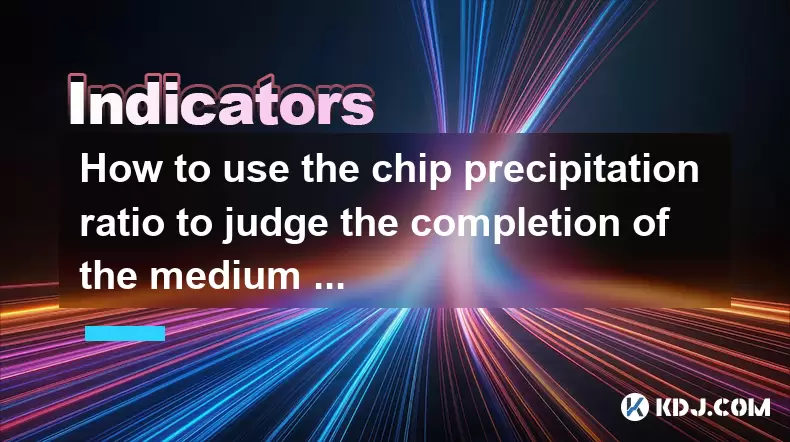
How to use the chip precipitation ratio to judge the completion of the medium and long-term bottom construction?
Jun 04,2025 at 03:36am
The chip precipitation ratio is a crucial metric used by investors to assess the accumulation of chips (or shares) at different price levels over time. This ratio helps in understanding the distribution of chips and can be a powerful tool for determining the completion of medium and long-term bottom construction in the cryptocurrency market. By analyzin...
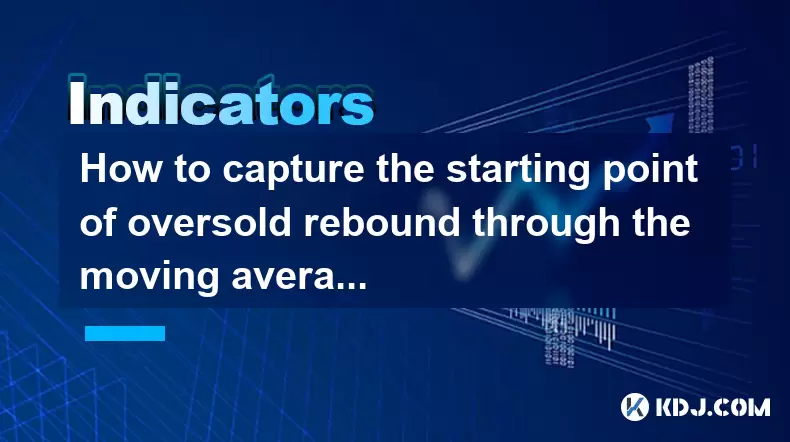
How to capture the starting point of oversold rebound through the moving average gravity reversal strategy?
Jun 04,2025 at 01:01pm
The moving average gravity reversal strategy is a sophisticated approach used by traders to identify potential entry points for buying cryptocurrencies when they are considered oversold. This strategy leverages the concept of moving averages to pinpoint moments when a cryptocurrency might be poised for a rebound. In this article, we will delve into the ...
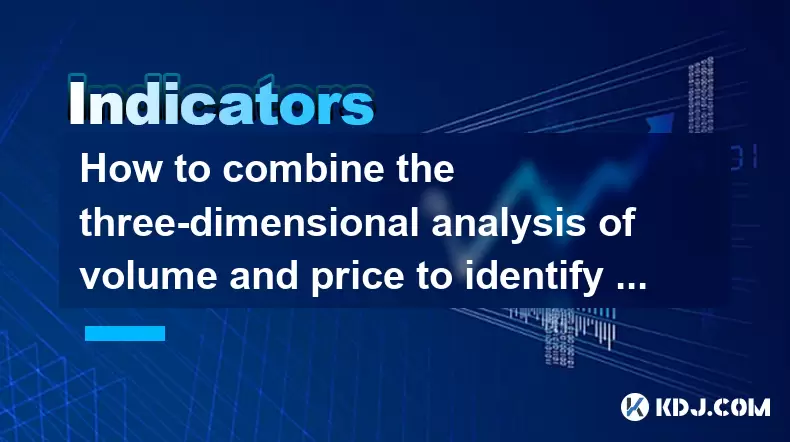
How to combine the three-dimensional analysis of volume and price to identify the golden buying point of breakthrough and retracement?
Jun 03,2025 at 11:42pm
In the dynamic world of cryptocurrencies, identifying the optimal buying points is crucial for maximizing profits and minimizing risks. One effective method to achieve this is by combining three-dimensional analysis of volume and price to pinpoint the golden buying points during breakouts and retracements. This article will delve into how to use this ap...
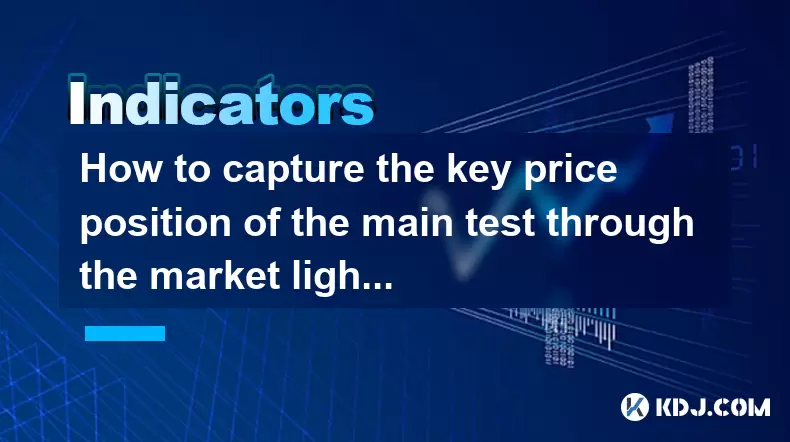
How to capture the key price position of the main test through the market lightning chart?
Jun 02,2025 at 06:07pm
Introduction to Market Lightning ChartThe market lightning chart is a powerful tool used by cryptocurrency traders to visualize price movements and identify key price positions. This chart type provides a detailed view of market activity, allowing traders to spot trends, reversals, and other significant price levels quickly. By understanding how to use ...
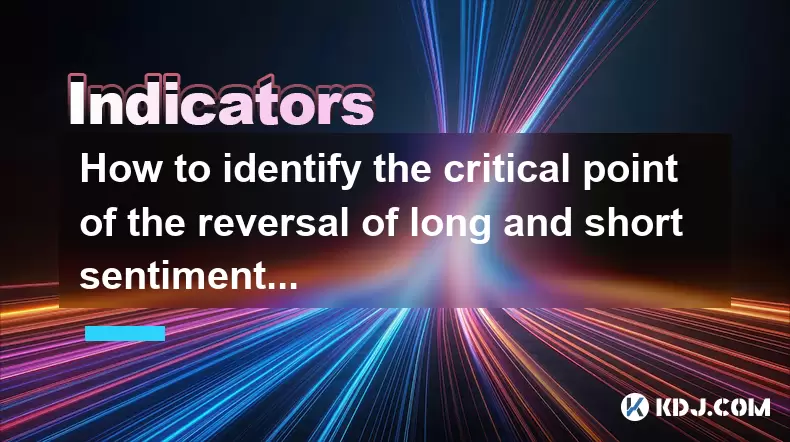
How to identify the critical point of the reversal of long and short sentiment through the K-line reverse package combination?
Jun 01,2025 at 03:36pm
In the world of cryptocurrency trading, understanding the sentiment of the market is crucial for making informed decisions. One effective method to gauge the potential reversal of long and short sentiment is through the analysis of K-line reverse package combinations. This technique involves studying specific patterns and formations within the K-line ch...
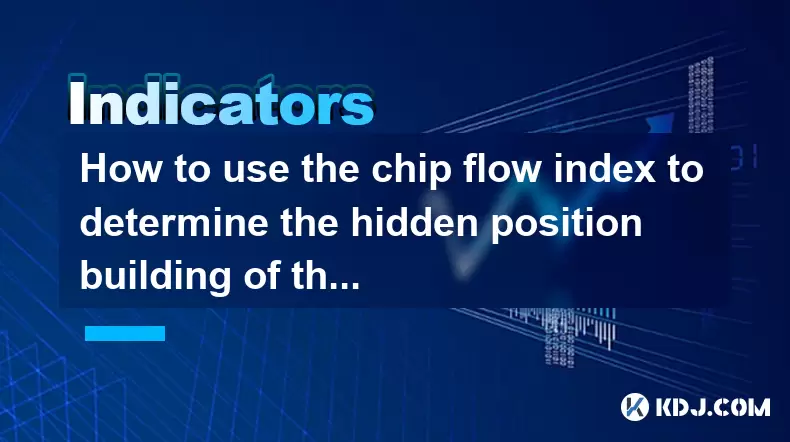
How to use the chip flow index to determine the hidden position building of the main funds?
Jun 01,2025 at 06:57pm
The Chip Flow Index (CFI), often referred to as the Volume Weighted Average Price (VWAP), is a crucial tool used by traders and investors to analyze the behavior of major funds in the cryptocurrency market. Understanding how to use the CFI can provide insights into the hidden position building of these main funds, which is essential for making informed ...

How to use the chip precipitation ratio to judge the completion of the medium and long-term bottom construction?
Jun 04,2025 at 03:36am
The chip precipitation ratio is a crucial metric used by investors to assess the accumulation of chips (or shares) at different price levels over time. This ratio helps in understanding the distribution of chips and can be a powerful tool for determining the completion of medium and long-term bottom construction in the cryptocurrency market. By analyzin...

How to capture the starting point of oversold rebound through the moving average gravity reversal strategy?
Jun 04,2025 at 01:01pm
The moving average gravity reversal strategy is a sophisticated approach used by traders to identify potential entry points for buying cryptocurrencies when they are considered oversold. This strategy leverages the concept of moving averages to pinpoint moments when a cryptocurrency might be poised for a rebound. In this article, we will delve into the ...

How to combine the three-dimensional analysis of volume and price to identify the golden buying point of breakthrough and retracement?
Jun 03,2025 at 11:42pm
In the dynamic world of cryptocurrencies, identifying the optimal buying points is crucial for maximizing profits and minimizing risks. One effective method to achieve this is by combining three-dimensional analysis of volume and price to pinpoint the golden buying points during breakouts and retracements. This article will delve into how to use this ap...

How to capture the key price position of the main test through the market lightning chart?
Jun 02,2025 at 06:07pm
Introduction to Market Lightning ChartThe market lightning chart is a powerful tool used by cryptocurrency traders to visualize price movements and identify key price positions. This chart type provides a detailed view of market activity, allowing traders to spot trends, reversals, and other significant price levels quickly. By understanding how to use ...

How to identify the critical point of the reversal of long and short sentiment through the K-line reverse package combination?
Jun 01,2025 at 03:36pm
In the world of cryptocurrency trading, understanding the sentiment of the market is crucial for making informed decisions. One effective method to gauge the potential reversal of long and short sentiment is through the analysis of K-line reverse package combinations. This technique involves studying specific patterns and formations within the K-line ch...

How to use the chip flow index to determine the hidden position building of the main funds?
Jun 01,2025 at 06:57pm
The Chip Flow Index (CFI), often referred to as the Volume Weighted Average Price (VWAP), is a crucial tool used by traders and investors to analyze the behavior of major funds in the cryptocurrency market. Understanding how to use the CFI can provide insights into the hidden position building of these main funds, which is essential for making informed ...
See all articles























































































